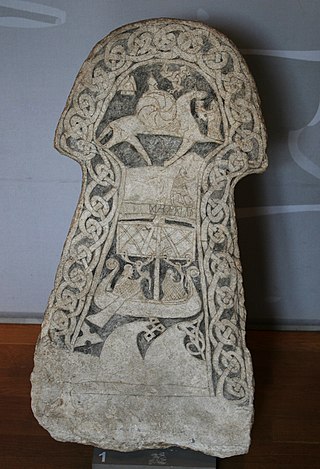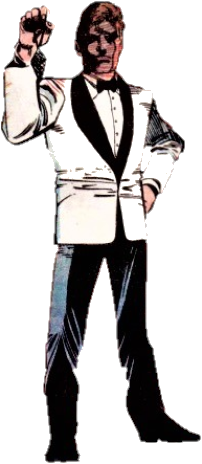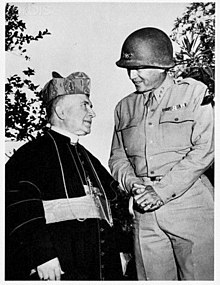
Hoplites were citizen-soldiers of Ancient Greek city-states who were primarily armed with spears and shields. Hoplite soldiers used the phalanx formation to be effective in war with fewer soldiers. The formation discouraged the soldiers from acting alone, for this would compromise the formation and minimize its strengths. The hoplites were primarily represented by free citizens – propertied farmers and artisans – who were able to afford a linen or bronze armour suit and weapons. It also appears in the stories of Homer, but it is thought that its use began in earnest around the 7th century BC, when weapons became cheap during the Iron Age and ordinary citizens were able to provide their own weapons. Most hoplites were not professional soldiers and often lacked sufficient military training. Some states maintained a small elite professional unit, known as the epilektoi or logades since they were picked from the regular citizen infantry. These existed at times in Athens, Sparta, Argos, Thebes, and Syracuse, among other places. Hoplite soldiers made up the bulk of ancient Greek armies.

Reincarnation, also known as rebirth or transmigration, is the philosophical or religious concept that the non-physical essence of a living being begins a new life in a different physical form or body after biological death. In most beliefs involving reincarnation, the soul of a human being is immortal and does not disperse after the physical body has perished. Upon death, the soul merely becomes transmigrated into a newborn baby or an animal to continue its immortality. The term transmigration means the passing of a soul from one body to another after death.

In Norse mythology, a valkyrie is one of a host of female figures who guide souls of the dead to the god Odin's hall Valhalla. There, the deceased warriors become einherjar. When the einherjar are not preparing for the cataclysmic events of Ragnarök, the valkyries bear them mead. Valkyries also appear as lovers of heroes and other mortals, where they are sometimes described as the daughters of royalty, sometimes accompanied by ravens and sometimes connected to swans or horses.

Zhu Bajie (Chinese: 豬八戒; pinyin: Zhū Bājiè; Wade–Giles: Chu1 Pa1-chieh4), also named Zhu Wuneng (he has two Buddhist Dharma names, one, "Wuneng" (悟能) given to him by the bodhisattva, Guanyin, and one, "Bajie" (八戒) given to him by Tang Sanzang/Tripiṭaka), is one of the three helpers of the aforementioned-Tang Sanzang and a major character of the 16th century novel Journey to the West. Zhu means "swine" and Bajie means "eight precepts". Prior to his being recruited by the bodhisattva, Guanyin, Zhu Bajie went by "Zhu Gāngliè" (豬剛巤; literally "Strong-Maned Pig"). Buddhist scholars consider that both expressions are related to "Śīla pāramitā". In many English versions of the story, Zhu Bajie is called "Monk Pig", "Pig", "Piggy", or "Pigsy".

The Battle of Delium took place in 424 BC, during the Peloponnesian War. It was fought between the Athenians and the Boeotians, who were allies of the Spartans, and ended with the siege of Delium in the following weeks.

Seven Seas Entertainment is an American publishing company located in Los Angeles, California. It was originally dedicated to the publication of original English-language manga, but now publishes licensed manga and light novels from Japan, as well as select webcomics. The company is headed by Jason DeAngelis, who coined the term "world manga" with the October 2004 launch of the company's website.
Abū Sufyān ibn al-Ḥārith ibn ʿAbd al-Muṭṭalib, born al-Mughīra (المغيرة), was a companion and first cousin of the Islamic prophet Muhammad.
Hath-Set is a DC Comics supervillain created by Gardner Fox and Dennis Neville. The character is the archenemy of Hawkman and Hawkgirl.

Kassassin is a village of Lower Egypt 22 miles (35 km) by rail west of Ismailia, a major city on the Suez Canal.

Hawkman is a superhero appearing in American comic books published by DC Comics. He is the first character to use the name Hawkman. There are two separate origins of Carter Hall; the Golden Age origin and the Post-Hawkworld origin.

Yen Press is an American manga, graphic novel and light novel publisher co-owned by Kadokawa Corporation and Hachette Book Group. It published Yen Plus, a monthly comic anthology, between 2008 and 2013. In addition to translated material, Yen Press has published original series, most notably Svetlana Chmakova's Nightschool and a manga adaptation of James Patterson's Maximum Ride.

Immortal Man, also known as Klarn Arg, is a superhero in the DC Comics Universe. He first appeared in Strange Adventures #177. Multiple versions of his origin connect him to the villain Vandal Savage, with both gaining immortality by encountering a strange meteorite during prehistoric times. Immortal Man was also a founding member of The Forgotten Heroes. In the 2018 comic book series The Immortal Men, Klarn's title "Immortal Man" is passed on to teenager Caden Park.

The Golden Book of Springfield is a mystic, utopian book by American poet Vachel Lindsay. It is the only extended, narrative work of prose fiction written by Lindsay. Written from 1904 to 1918 and published in 1920, it has historically been classified as a work of utopian fiction. The Golden Book of Springfield is a story about Lindsay's hometown of Springfield, Illinois in 1918 and in 2018, when residents of the city work to transform the city into a utopian paradise-city.
The present 14th Dalai Lama once suggested the different possibilities of reincarnation for the next (15th) Dalai Lama, but because of the feudal origin of the Dalai Lama reincarnation system, he suggested the reincarnation system should end. The selection process remains controversial, as the atheist Chinese government has declared ownership on the selection process using the Golden Urn for the next Dalai Lama. Article 1 of the 29-Article Ordinance for the More Effective Governing of Tibet states that the purpose of Golden Urn is to ensure prosperity of Gelug, and to eliminate cheating and corruption in the selection process. In 1792, the Qianlong Emperor published an article known as The Discourse of Lama, in which he explained why he thought it would be a fair system of choosing the reincarnated lamas with Golden Urn, as opposed to choosing reincarnated lamas based on private designation, or based on one person's decision. Also, he stated that Golden Urn was invented to eliminate greedy family with multiple reincarnated rinpoches, or lamas. On 26 January 1940, the Regent Reting Rinpoche requested the Central Government to exempt Lhamo Dhondup from lot-drawing process using Golden Urn to become the 14th Dalai Lama. The request was approved by the Central Government of Republic of China in 1940. In 2004, the Religious Affairs Regulations was published by the Central Government of China after the Method of Reincarnation of Lamas was abolished by Republic of China. Article 36 of the Religious Affairs Regulations states that the reincarnation system must follow religious rituals and historical customs, and be approved by the government.

Life and Death Are Wearing Me Out is a 2006 novel by Chinese writer Mo Yan, who won the Nobel Prize for Literature in 2012. The book is a historical fiction exploring China's development during the latter half of the 20th century through the eyes of a noble and generous landowner who is killed and reincarnated as various farm animals in rural China. It has drawn praise from critics, and was the recipient of the inaugural Newman Prize for Chinese Literature in 2009. An English translation was published in 2008.

Lewis Henry Douglass was an American military Sergeant Major, the oldest son of Frederick Douglass and his first wife Anna Murray Douglass.

The Wicked + The Divine is a contemporary fantasy comic book series created by Kieron Gillen and Jamie McKelvie, and published by Image Comics. The series is largely influenced by pop music and various mythological deities, and includes the themes of life and death in the story. The comic has received positive reviews, and was the winner of Best Comic at the 2014 British Comic Awards. It has also been noted for its diverse portrayal of ethnicity, sexuality and gender social roles.

Disgaea 6: Defiance of Destiny is a tactical role-playing video game developed and published by Nippon Ichi Software as part of the Disgaea series. It was released for Nintendo Switch and PlayStation 4 on January 28, 2021, in Japan, and by Sega on May 27, 2021, in Asia. NIS America released the Nintendo Switch version worldwide on June 29, 2021. In total, the game was translated into French, English, Traditional Chinese and Korean. A version with all previous downloadable content, titled Disgaea 6 Complete, was released for PlayStation 5 on June 16, 2022, in Japan, followed by a worldwide release on June 28, 2022, alongside PlayStation 4 and Microsoft Windows platforms.





















